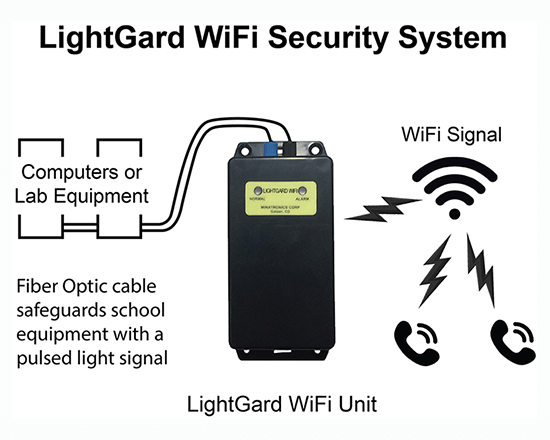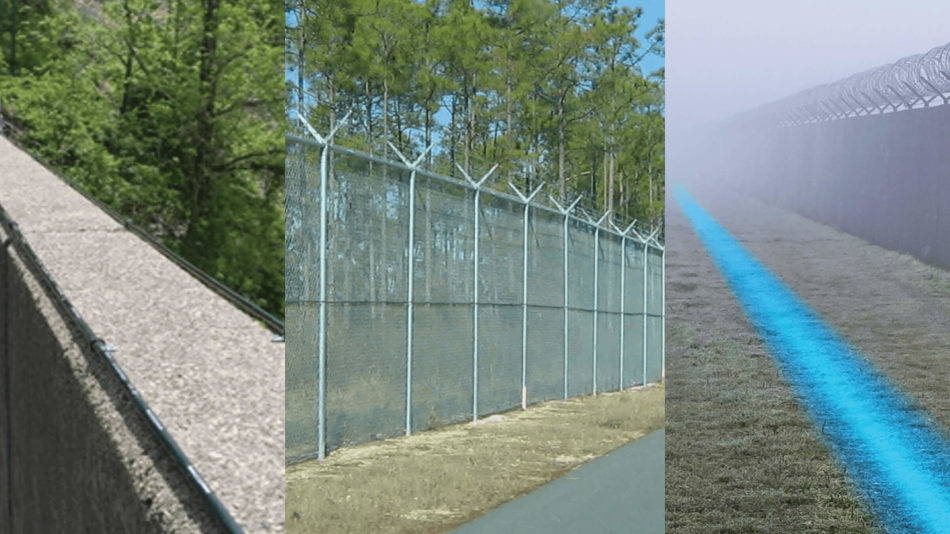The Ultimate Overview to Fiber Optic Safety Solutions for Your Organization
In a period where security issues are extremely important for companies, comprehending the ins and outs of fiber optic technology can be transformative. This guide describes just how integrating fiber optic protection systems not just boosts information protection yet likewise provides benefits like resistance to interference and real-time monitoring abilities. As organizations review their safety and security needs, it becomes critical to take into consideration the installment procedure and the most recent developments in the area. What specific variables should be prioritized when picking the appropriate system, and just how can businesses ensure they make one of the most educated options?
Understanding Fiber Optic Technology

The core of a fiber optic cable television is composed of a thin glass or plastic facility, bordered by a cladding layer that reflects light back into the core. fiber optic security system. This layout guarantees very little loss of signal toughness, even over extensive ranges. There are two key sorts of fiber optic wires: single-mode and multi-mode. Single-mode fibers are created for long-distance transmission, while multi-mode fibers are ideal for much shorter distances, commonly used within structures.
Fiber optics are not just much faster but also a lot more safe and secure than standard circuitry. Their inherent resistance to electro-magnetic interference and the problem of touching right into the signal without detection make them a recommended choice for companies prioritizing information stability and safety and security. As organizations progressively count on secure and efficient interaction systems, recognizing fiber optic technology becomes important for educated decision-making.
Key Advantages of Fiber Optic Protection
When considering security options for a business, the advantages of fiber optic systems are specifically engaging. Most importantly, fiber optic technology offers outstanding information transmission rates and bandwidth capacity, making it perfect for handling high-resolution video feeds from surveillance cams. This capacity makes sure that safety and security personnel receive real-time information, boosting general reaction times to possible safety risks.
Moreover, fiber optic wires are naturally resistant to electro-magnetic interference, which can compromise the honesty of standard copper-based systems. This resistance makes certain that the data transmitted stays protected and undisturbed, offering an extra trustworthy safety and security facilities. Furthermore, fiber optics are much less susceptible to physical damages, as they are made from glass as opposed to metal, minimizing maintenance expenses and downtime.
Fiber optic systems provide improved this page cybersecurity attributes, consisting of security capacities that protect sensitive information from unauthorized gain access to. Jointly, these advantages make fiber optic protection systems a robust selection for businesses seeking to enhance their safety and security steps.
Installation Process and Considerations
Thinking about the complexities included, the installation process of fiber optic security systems requires careful preparation and execution. The initial step involves a comprehensive site analysis to recognize optimum areas for cabling and tools. This assessment must think about environmental elements, existing infrastructure, and prospective susceptabilities.

Furthermore, the installment needs to abide by local building ordinance and industry criteria. This may include coordinating with numerous stakeholders such as structure managers, IT groups, and safety workers to ensure smooth assimilation with existing systems.
Post-installation, rigorous screening is needed to confirm system performance and identify any concerns that may arise. By focusing on these factors to consider throughout the setup process, organizations can guarantee a robust and efficient fiber optic safety and security system that fulfills their certain safety and security demands.
Latest Technologies in Fiber Optic Safety And Security
Current improvements in fiber optic innovation have actually considerably enhanced the capabilities of safety and security systems for companies. Among the most noteworthy developments is the combination of fiber optic sensors that can detect vibrations and intrusions along the border of a facility. These sensing units provide real-time surveillance, making it possible for rapid feedback to potential breaches.
Additionally, the growth of distributed fiber optic noticing modern technology enables the continual monitoring of big locations with a single fiber cable television. This method not only lowers great site installation costs however likewise improves the dependability of monitoring systems by getting rid of the demand for multiple, different sensing units.
Additionally, improvements in multiplexing strategies have actually allowed organizations to transmit large amounts of information over fiber optic networks, improving the capacities of video clip security systems. High-definition video feeds can now be sent out over fars away without loss of top quality, guaranteeing that security workers have accessibility to clear and workable details.
Last but not least, the usage of synthetic intelligence (AI) along with fiber optic systems is reinventing danger discovery. AI formulas can evaluate data from fiber optic networks to determine unusual patterns or behaviors, enabling positive security measures. These innovations jointly stand for a significant jump ahead in fiber optic safety and security innovation.
Choosing the Right System for Your Business
Selecting the ideal fiber optic protection system for your service is vital for making sure ideal security and comfort. To make an informed selection, examine your particular safety and security needs, taking into consideration aspects such as the size of your premises, the nature of your procedures, and prospective vulnerabilities.
Begin by evaluating the degree of safety required; for example, high-risk settings may demand advanced systems with incorporated surveillance and breach detection capabilities. Next, take into consideration scalability; as your service grows, your protection system ought to be qualified of increasing to fit increased needs without significant overhauls.
In addition, investigate i was reading this the dependability and efficiency of numerous systems. Look for companies with well-known credibilities and customer testimonials that vouch for their service quality. It's also recommended to ask about the technology's compatibility with existing infrastructure, guaranteeing a seamless combination process.
Final Thought
Finally, fiber optic protection systems offer a durable remedy for boosting organization protection infrastructures. The assimilation of high-speed information transmission, resistance to electromagnetic disturbance, and progressed tracking abilities considerably boosts overall protection (fiber optic security system). By understanding the technology, identifying its advantages, and thinking about the installment procedure, companies can make educated decisions. The current innovations even more reinforce the effectiveness of these systems, making certain that organizations remain protected and adaptable in an ever-evolving hazard landscape.